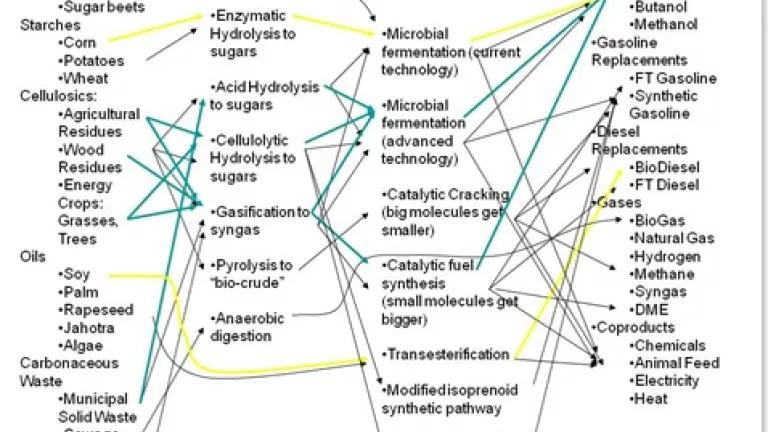
At the Detroit Auto Show, GM announced its investment in a new cellulosic ethanol company called Coskata. The company's approach is to gasify biomass and then use microbes to convert the syngas to ethanol. A number of people have asked me if Coskata's technology is a big deal breakthrough. The answer, of course, is that I have no idea. What I do think is that it's another reason why, more than ever, we need to keep moving aggressively to a technology-neutral, performance-based low-carbon fuel policy.
Over the last 2 years, there has been an explosion of companies working on different pathways from different feedstocks through different conversion steps to different fuel molecules. Jeremy Martin, UCS' new biofuels analyst, made the following map showing all the major options. Not all of these combinations are necessarily under development. At least as far as I know.
As I mentioned in my New Year's post and am quoted on in this article, one force behind this explosion is the oil company's interest in finding a biofuel that's more compatible with their existing infrastructure. But the greater set of challenges are the environmental. This story about Europe potentially banning biofuels produced from feedstocks grown on various sensitive landscapes and this little blurb about the Ecological Society of America's statement on biofuels give some sense of the challenges.
Interestingly, many of the landscapes Europe is considering protecting were protected as part of the new renewable fuel standard recently signed into law as part of the Energy Independence and Security Act of 2007 (H.R.6). Between that, California's low-carbon fuel standard, and the minimum lifecycle greenhouse gas standards included in the RFS, it is entirely possible that biofuels policy in the US will be more aggressive than the EU by the end of the year.

